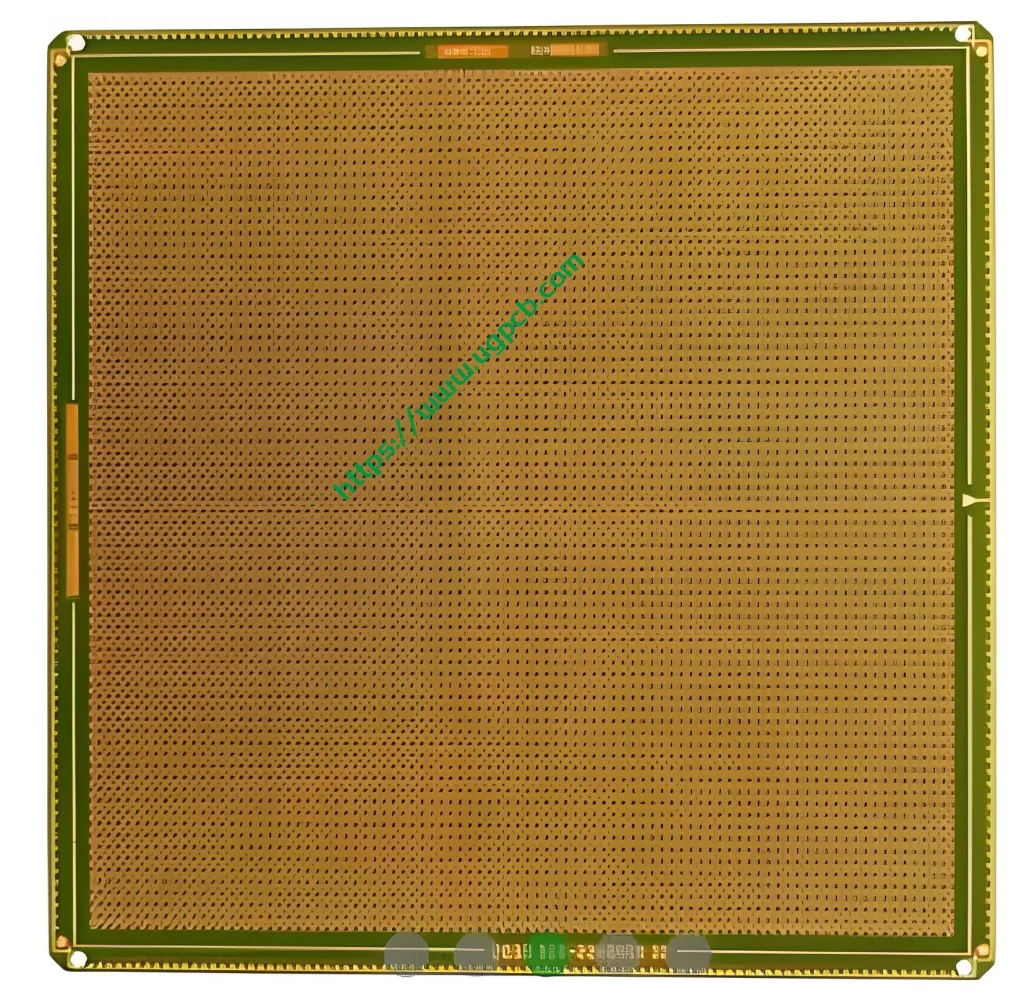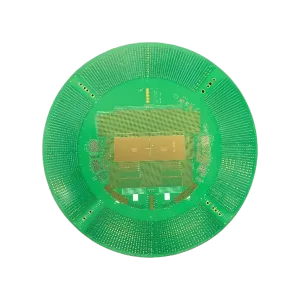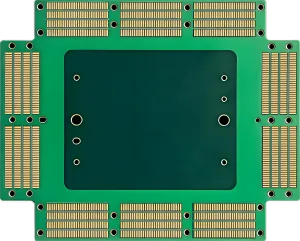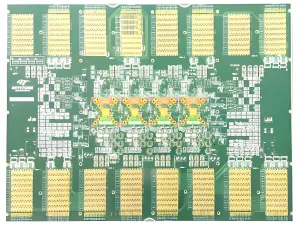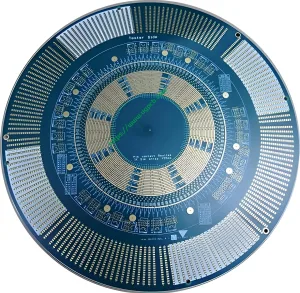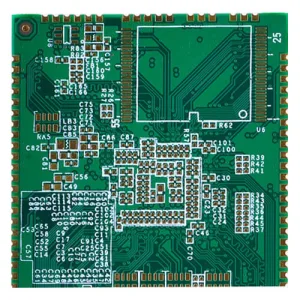로드 보드 PCB 개요를 먹었습니다
ATE 로드 보드 PCB는 고도로 전문화되어 있습니다. 인쇄 회로 기판 자동화된 테스트 장비에 사용하도록 설계됨 (먹었다) 시스템. 이 고급 PCB 테스트를 지원합니다. 전자 구성 요소 실제 부하를 시뮬레이션하여 시스템을 구축합니다.. 아래는 ATE 부하 보드 PCB에 대한 포괄적 인 소개입니다., 일반 정보를 다루고 있습니다, 분류, 재료, 성능, 구조, 특징, 생산 과정, 및 응용 프로그램 시나리오.
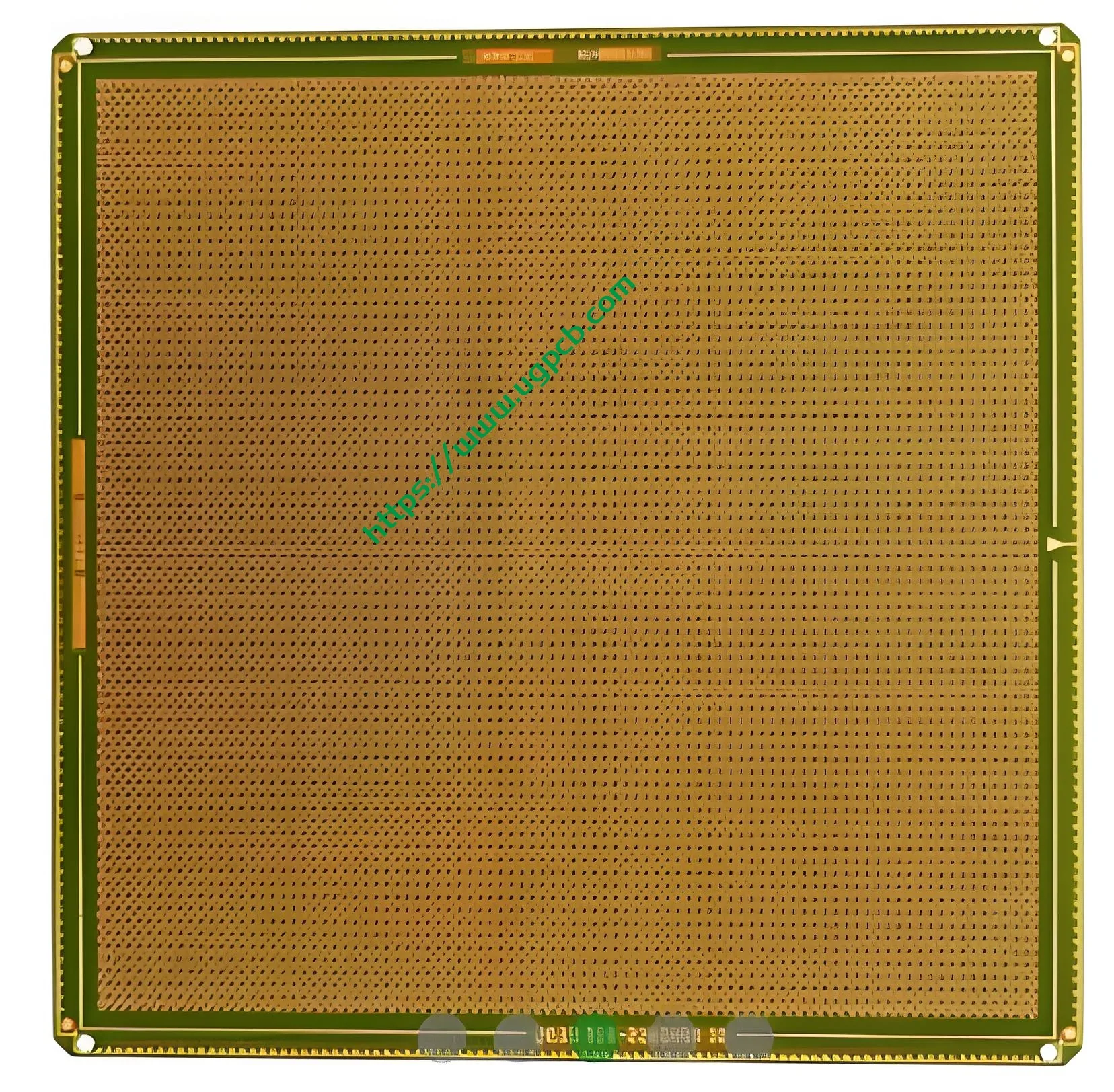
분류
Ate Load Board PCB는 복잡성에 따라 분류됩니다., 레이어 수, 및 특정 응용 프로그램 요구 사항. 여기에 소개 된 모델, ATE 로드보드 PCB, 28 층 PCB입니다, 복잡성이 높고 복잡한 테스트 시나리오를 처리 할 수있는 용량을 나타냅니다..
재료 구성
ATE 로드 보드 PCB는 다음을 사용하여 구성됩니다. TUC/TU872HF 소재, 우수한 전기 및 기계적 특성으로 알려진 고성능 기판. 이 자료는 까다로운 시험 조건에서 PCB의 신뢰성과 내구성을 보장합니다..
성능 특성
Ate Load Board PCB는 여러 성능 영역에서 탁월합니다., 고전류 운반 능력을 포함합니다, 낮은 신호 손실, 우수한 열 관리. 내부 및 외부 층 모두에 2oz 구리 두께를 사용하면 전기 전도도 및 열 소산 능력이 향상됩니다.. 추가적으로, 하드 골드 3-15U 표면 마감은 우수한 내식성과 납땜 가능성을 제공합니다..
구조 설계
구조적으로, Ate Load Board PCB는 5.0mm의 보드 두께가 있습니다., 복잡한 회로 및 구성 요소를위한 강력한 기초 제공. 노란색은 시각적 차이를 추가 할뿐만 아니라 검사 및 문제 해결 프로세스를 도와줍니다..
독특한 특징
Ate Load Board PCB는 고유 한 기능으로 두드러집니다., 정밀한 구성 요소 배치 및 상호 연결을위한 향상된 열전도율 및 깊이 제어 드릴링을위한 금속 클래딩 포함. 이러한 기능, 높은 층 수 및 고급 재료와 결합, Ate Applications에 이상적인 선택을하십시오.
생산 과정
ATE로드 보드 PCB의 생산에는 일련의 정교한 단계가 포함됩니다.:
- 재료 준비: TUC/TU872HF 기판이 준비되어 필요한 치수로 절단됩니다..
- 구리 라미네이션: 구리 호일은 기판에 적층된다, 2oz 두께 요구 사항에 특별한주의를 기울입니다.
- 회로 패터닝: 원하는 회로 패턴은 정밀 에칭 기술을 사용하여 구리 포일에 에칭됩니다..
- 층 스태킹 및 라미네이션: 다중 층이 쌓여 함께 적층됩니다, 정확한 정렬 및 결합 보장.
- 시추 및 도금: 구성 요소 장착 및 상호 연결을위한 구멍을 만드는 데 깊이 제어 드릴링이 수행됩니다.. 그런 다음 구멍은 전도도를 향상시키기 위해 도금됩니다.
- 금속 클래딩: 열전도율과 기계적 강도를 향상시키기 위해 금속 층이 PCB 표면에 적용됩니다..
- 표면 마감 적용: 하드 골드 3-15U 코팅은 부식 저항성 및 납땜 가능성을 제공하기 위해 적용됩니다..
- 최종 검사 및 테스트: PCB는 사양 및 성능 요구 사항을 준수하기 위해 엄격한 검사 및 테스트를 거칩니다..
응용 시나리오
Ate Load Board PCB는 주로 전자 구성 요소 및 시스템 테스트 및 검증을 위해 자동화 된 테스트 장비 시스템에서 주로 사용됩니다.. 그것들은 반도체 산업에서 필수적입니다, 자동차 산업, 항공 우주 산업, 높은 신뢰성 테스트가 중요한 다른 부문. 실제 하중을 시뮬레이션하여, Ate Load Board PCB는 엔지니어가 실제 애플리케이션에 배치되기 전에 전자 장치의 성능 및 신뢰성을 확인할 수 있습니다..
 UGPCB 로고
UGPCB 로고

